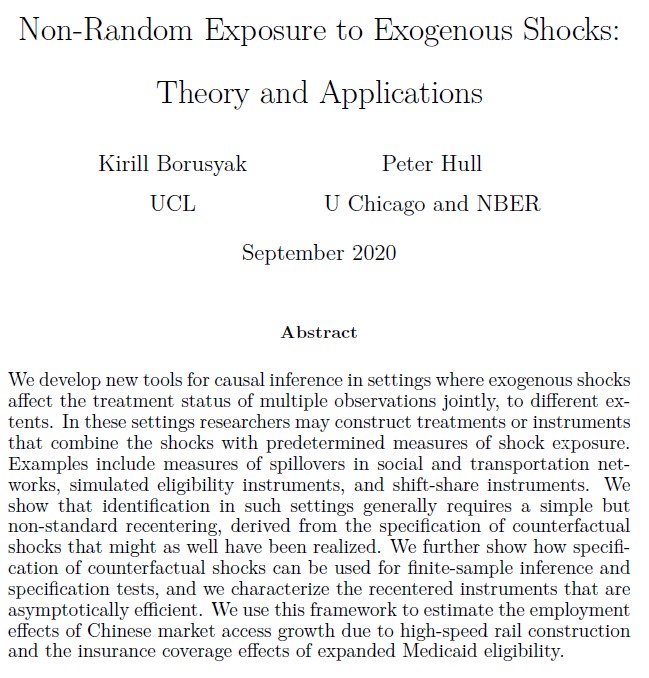
On the 1st anniversary of my twitter account, I'm happy to share w/the #EconTwitter community our #stata commands for event studies:
did_imputation: robust and efficient imputation estimator
event_plot: event study plots after various estimation methods
github.com/borusyak/did_i…
did_imputation: robust and efficient imputation estimator
event_plot: event study plots after various estimation methods
github.com/borusyak/did_i…
I’ve discussed did_imputation in the 🧵 on our paper w/@XJaravel and @jannspiess
Key points: the estimator is
- robust to heterogeneous effects
- efficient under homoskedasticity
- transparent
- robust to pre-testing
- works w/controls, triple-diffs, etc
Key points: the estimator is
- robust to heterogeneous effects
- efficient under homoskedasticity
- transparent
- robust to pre-testing
- works w/controls, triple-diffs, etc
https://twitter.com/borusyak/status/1394680063384248320
Now on the plotting command:
With event_plot, you can make event study plots for at least 5 methods:
- our did_imputation
- robust estimators of @CdeChaisemartin-D’Haultfoeuille, Callaway-@pedrohcgs, Sun-Abraham
- traditional OLS
And combine them with each other if you wish!
With event_plot, you can make event study plots for at least 5 methods:
- our did_imputation
- robust estimators of @CdeChaisemartin-D’Haultfoeuille, Callaway-@pedrohcgs, Sun-Abraham
- traditional OLS
And combine them with each other if you wish!

On this figure you can see:
- how precise each event study estimator is (which of course depends on the DGP)
- how long estimation takes
- how dynamic OLS is biased with heterogeneous effects (Sun-Abraham’s result)
- how precise each event study estimator is (which of course depends on the DGP)
- how long estimation takes
- how dynamic OLS is biased with heterogeneous effects (Sun-Abraham’s result)
This is likely the first time all estimators are on one graph. The code is on github for you to use in any application!
But don’t overlook the differences in assumptions, properties & interpretation of coefs (e.g. which reference groups are used for causal effects & pre-trends)
But don’t overlook the differences in assumptions, properties & interpretation of coefs (e.g. which reference groups are used for causal effects & pre-trends)
Comments and feedback on both commands and on our paper with @XJaravel and @jannspiess are most welcome!
And special thanks to @kylefbutts for the help with preparing the helpfiles for both commands
And special thanks to @kylefbutts for the help with preparing the helpfiles for both commands
• • •
Missing some Tweet in this thread? You can try to
force a refresh








